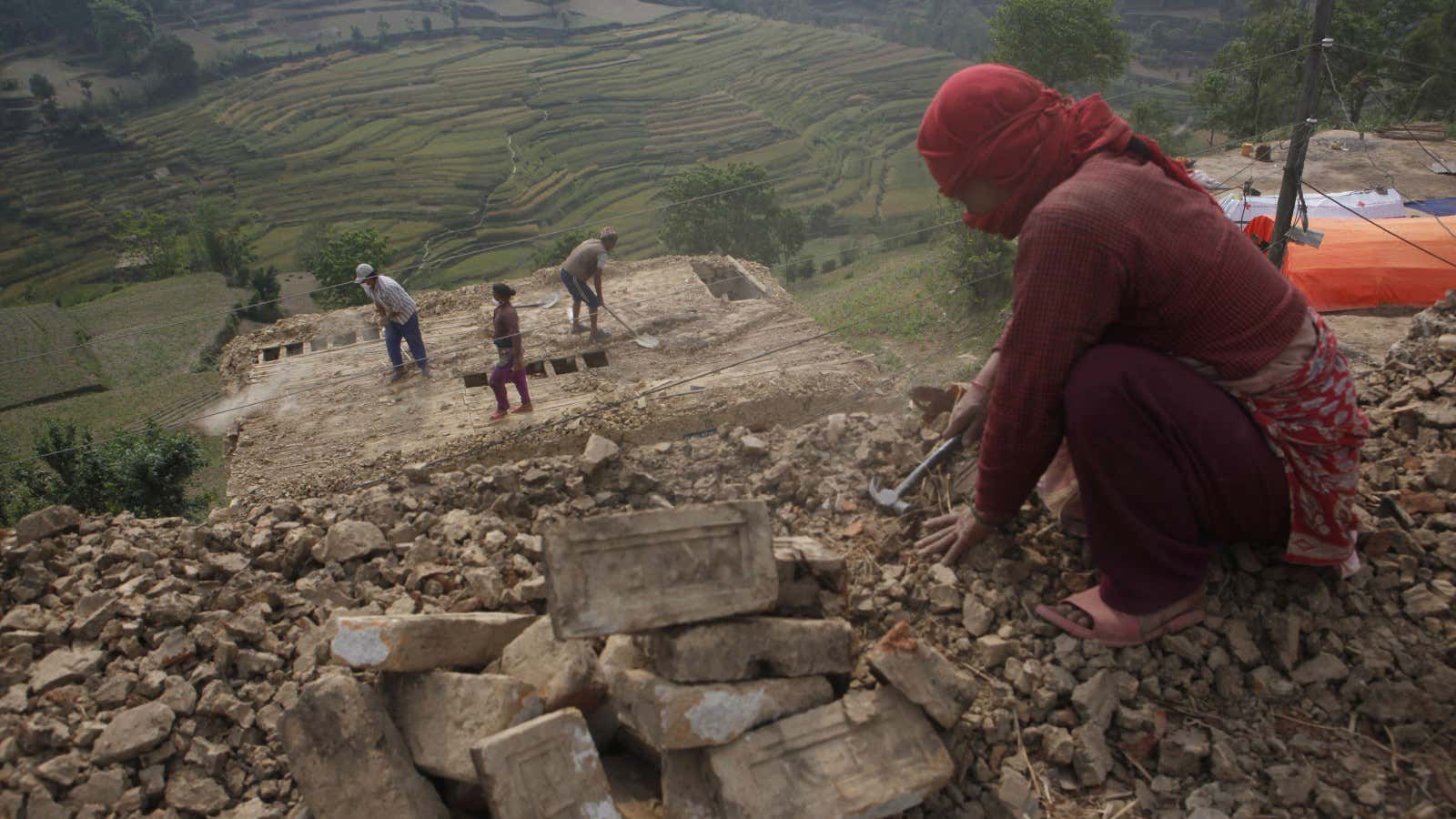Foreign countries and international agencies have pledged $4.1 billion to aid Nepal’s recovery after the April 25 earthquake, but according to Reuters, officials in Kathmandu have yet to make plans to receive and spend that money.
This might come as a surprise to foreign donors who moved swiftly to organize relief, but the Nepalese people themselves might have predicted the slow response from their country’s officials.
While nongovernmental organizations made immediate efforts to provide food, medical treatment, and tarps and tents for shelter after the 7.8-magnitude quake—which together with a 7.3-magnitude quake on May 12 left nearly 3 million people homeless in the Himalayan country—almost no one expected immediate help from the Nepalese government itself, including the people I spoke with in Kathmandu when I was there on May 3 and May 4. That a natural disaster like this had been predicted, and that the country’s leaders should have been prepared for it, simply did not seem worth complaining about.
By May 5, when the country’s finance minister had said Nepal needed at least $2 billion to rebuild, and various western nations had begun pledging millions of dollars, expectations were tempered still. Writing for The New Yorker, Prashan Jha said some thought “no government could have dealt with a crisis of this magnitude, let alone Nepal’s,” noting that the country’s lawmakers had not even been able to write a constitution since 2006, the end of the country’s decade-long civil war.
Manjushree Thapa, writing for The Walrus, called Nepal’s politics “a pre-existing disaster“:
What stood before the earthquake was a government in paralysis with only the barest state structure—the bureaucracy, the security forces—operating as if on autopilot, unresponsive to even the most urgent demands from the people. So absent was political leadership that Prime Minister Sushil Koirala, out of country for a meeting, reportedly learned about the earthquake from a tweet by India’s Prime Minister Narendra Modi.
This was just before the annual monsoon rains began, meaning major reconstruction efforts would likely have to wait until autumn. But now autumn is approaching, and tens of thousands of people have spent the past four rainy months living under tarps and tents, and Kathmandu has yet to finalize any plans for state-led reconstruction or aid distribution.
Meanwhile, the government has been pre-occupied with finally trying to pass a controversial constitution that would overhaul the entire political system. Such an overhaul would ostensibly make the recovery from the earthquake easier in the long run, but, as the leader of Nepal’s newly created reconstruction authority told Reuters, “We would have liked it if they concentrated on the reconstruction first.”
